BY LINCOLN ANDERSON | Updated Thurs., Dec. 16, 1:30 p.m.: Local residents didn’t think it could be done. They prayed it wouldn’t be done. But mayor de Blasio got his upzoning for Soho, Noho and “Soho East”…er, part of Chinatown…in under the wire, though barely.
On Wednesday afternoon, the full City Council overwhelmingly approved the contentious scheme by a vote of 43 to 5, with just two weeks left in the mayor’s final term in office.
Two years ago, de Blasio had seemingly shelved the ambitious rezoning for the highly coveted neighborhoods, saying there wasn’t enough time left to push the plan through before he was term-limited out of City Hall. But then in October 2020 he suddenly revived the effort.
The councilmembers who voted no on Wednesday were Ben Kallos, Carlos Menchaca, Robert Holden, Inez Barron and Kalman Yeager.
De Blasio still has to sign off on the rezoning, though it’s obviously a foregone conclusion that he will.
In a joint press release after the conclusive vote, Councilmembers Margaret Chin and Carlina Rivera hailed it as a major victory for housing, and called it “a housing-first rezoning.”
“This historic rezoning will create a rational framework for equitable housing generation and retail operation — one that I hope we will see replicated in neighborhoods throughout the five boroughs in the years to come,” Rivera said. “Through hard work and rigorous process, made possible only by the unwavering dedication of our teams and advocates to building a better future for all New Yorkers, we were able to balance the concerns of community stakeholders while centering our main goal: to incentivize the creation of affordable housing in a transit- and resource-rich neighborhood.”
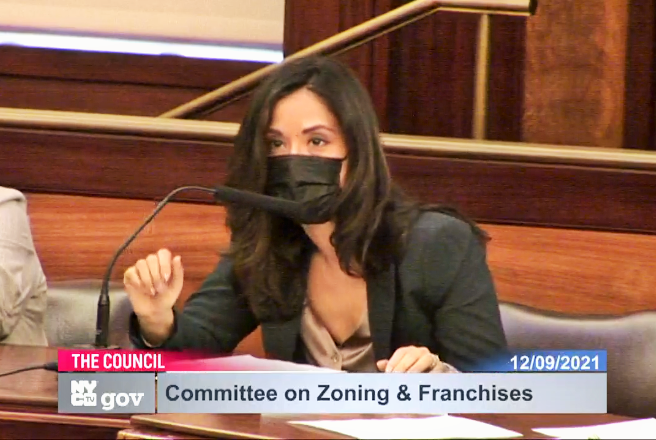
“The final zoning map and text are a product of countless hours of negotiation with the administration and in-depth discussion with community stakeholders,” Chin said. “As a city councilmember, I believe it is my responsibility to create equal housing opportunities in high-opportunity neighborhoods for low-income New Yorkers, and I am confident that this rezoning accomplishes that goal. This historic rezoning will create thousands of new homes and it is my hope that the city’s fair housing plan is implemented in a similar fashion across the entire city to ease New York City’s housing crisis.”
Affordable housing — or loopholes?
The city estimates the rezoning will create about 3,000 new homes, 900 of which would be affordable at an average of 60 percent of area median income, with 10 percent of the total new units at or below 40 percent A.M.I. Opponents, though, counter that under the Mandatory Inclusionary Housing program, there are Mack truck-sized loopholes that developers can exploit to avoid creating affordable units, such as if they build less than 25,000 square feet per lot.
In what Chin and Rivera touted as responses to local stakeholders’ concerns, the final agreement reduced the commercial bulk allowance (F.A.R.) throughout the rezoning district to encourage residential construction; eliminated dorm, college and university use; requires a special permit for eating and drinking establishments larger than 8,500 square feet and also for retail stores larger than 10,000 square feet on narrow streets and 25,000 square feet on wide streets. (However, opponents charged that the “special permit” claim for large retail is misleading, and that all that actually will be required is a “sign-off” by the chairperson of the City Planning Commission, as opposed to real community input and review.)
In advocating for rezoning the majority-white district, supporters pointed out that previous rezonings were mostly focused in communities of color.
Chin and Rivera’s press release, however, pointedly noted that the rezoning effort had to overcome “several roadblocks…from private interests, political pressure, scare tactics and misinformation.”
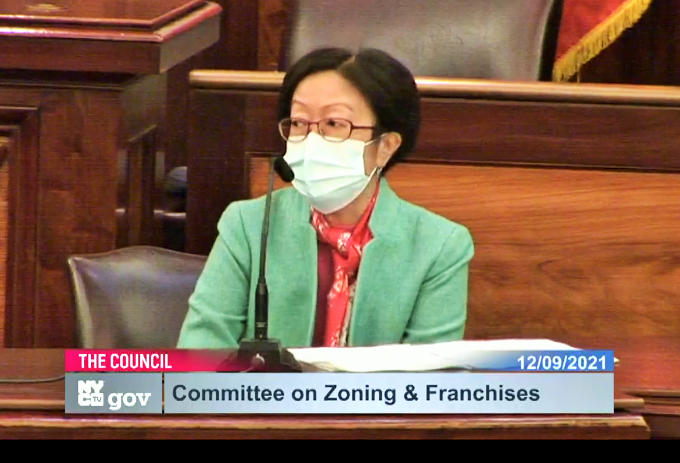
Chin’s Council district includes most of the rezoning area while Rivera’s includes a small part of it in Noho.
‘Part of pandemic recovery’
Meanwhile, the de Blasio administration spun the rezoning as critical to the city’s recovery from the pandemic
“As we recover from the COVID-19 pandemic, equity must be at the forefront of our work to increase affordable housing and economic opportunities,”Anita Laremont, the director of the Department of City Planning, said. “Today’s approval of the Soho/Noho Neighborhood Plan stands for the idea that all neighborhoods can and should play a part in solving the planning challenges we, as New Yorkers, share. Through permanently affordable housing requirements, support for the arts and a balance between historic preservation and continued growth, this initiative is a much-needed step toward a fairer, more livable city.”
Supporters of the rezoning hailed its passage. Will Thomas, executive director of Open New York, was given ink in the official press release. The rezoning’s opponents, though, deride Open New York as a phony “astroturf” organization — a front for Big Real Estate.
“This historic rezoning process has revealed that there is a broad coalition of New Yorkers who share a commitment to abundant, affordable and equitable housing — and we’re proud to have leaders like Councilmembers Chin and Rivera fighting with us,” Thomas said. “Thanks to them, thousands of New Yorkers will soon be able to call Soho and Noho home.”
Noho leader fine with fines
Zella Jones, president of Noho-Bowery Stakeholders, Inc., also praised the plan.
“Noho is proud to contribute and welcome affordability and we appreciate that affordable credits we may not be able to realize in our antique buildings will help fund units in lots close to our resource-rich neighborhood,” she said. “And we appreciate the most recent modifications…regarding fine imposition for illegal J.L.W.Q.A. [Joint Live Work Quarters for Artists] units.”
The fines Jones referred to are in a separate bill by Chin — which also passed — to increase penalties for nonartist residents in Soho and Noho’s J.L.Q.W.A. units. In addition, the rezoning plan itself includes a “flip tax” for selling J.L.Q.W.A.-zoned units to nonartists, the revenue from which will, in turn, finance a Downtown-wide “arts fund.” Opponents, including Assemblymember Deborah Glick, have criticized this fund for being poorly defined.
Upzoning a historic district
Meanwhile, after Wednesday’s conclusive vote, leading opponents of the rezoning once again hammered it as developer-driven and said it would radically transform the neighborhoods — for the worse. Notably, it’s the first time an official New York City-designated historic district has ever been upzoned — a very dangerous precedent, preservationists warn.
Residents, joined by leading housing organizations, like Met Council on Housing and Tenants PAC, have slammed the plan as a blatant giveaway to developers, albeit swathed in what they call an illusory hype of potential affordable housing.
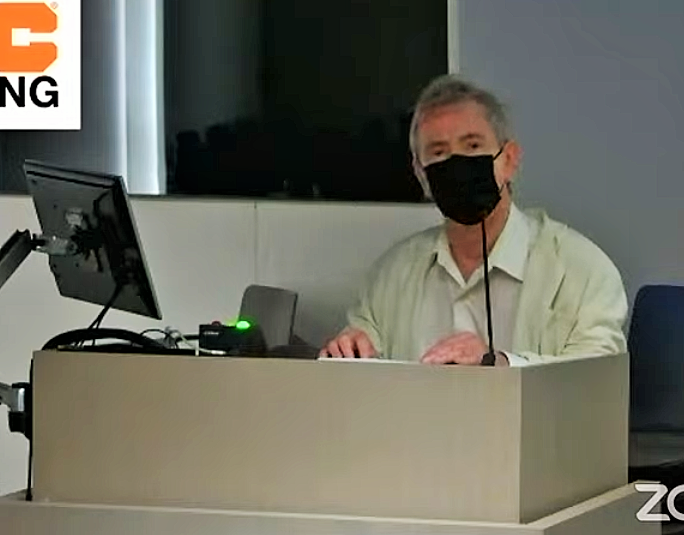
Sean Sweeney, director of the Soho Alliance, accused Chin of catering to Big Real Estate’s wishes to open the floodgates wide for developers in Soho and Noho.
‘REBNY got what it wanted’
“The Real Estate Board of New York’s investment in Margaret Chin’s reelection was wise and has paid off in spades,” he fumed. “REBNY got all it wanted: legalization of big-box retail, increased height and bulk, evisceration of the 56-year-old Landmarks Law, and introduction of thousands of units of luxury housing, with not a scintilla of a guarantee that a single unit of affordable housing will ever be built, due to the various loopholes provided by the de Blasio administration.
“However, residents — both artists and nonartists — have been hit with draconian penalties starting at $40,000 and reaching into the hundreds of thousands to force them to convert to the new zoning requirements, while retail businesses that operated illegally for years can now operate legally without having to pay a dime.
“Clearly,” Sweeney said, “this is a punitive rezoning, punishment for resident activists who stood up to de Blasio’s flimflam finale, and spiteful revenge by Margaret Chin for our support of her poltiical opponents.”
As for legal recourse, the Soho Alliance, which previously sued over the rezoning but did not prevail, is throwing in the towel for now. However, Sweeney said, “a new group in Noho” is currently doing legal fundraising and has retained a lawyer.
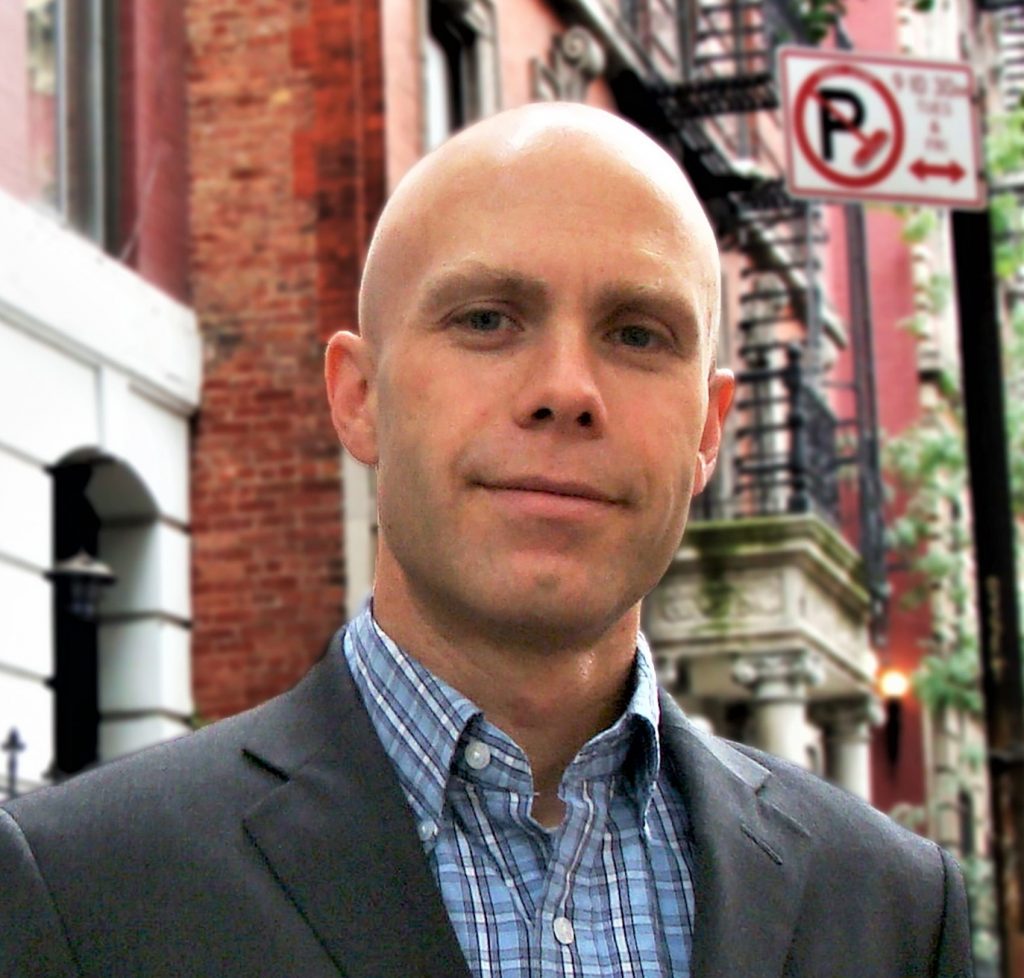
Andrew Berman, the executive director of Village Preservation, scoffed that, at best, the amount of affordable housing created under the plan would be “a tiny percentage.”
‘A flood of luxury condos’
“In spite of all the smoke and mirrors, let’s be clear: This plan is a giant giveaway to real estate interests, with the promise that a tiny percentage of that enormous gift will be returned to the public in the form of new affordable housing,” he said. “The reality is, in by far the majority of cases, it won’t.
“What it will do is prompt a flood of luxury condos, giant big-box chain stores and high-priced corporate offices and hotels, and generate enormous pressure and incentive to demolish hundreds of units of affordable, rent-regulated housing in the area, displacing lower-income residents who are disproportionately seniors, artists and Asian Americans,” Berman said.
“The changes wrought by the City Council are lipstick on the proverbial pig. The ‘points of agreement’ between the Council and the administration are a laughable mix of hollow gestures, recycled prior agreements and promises that neither this Council nor mayor are obligated to keep. Everything about this process has been built on deception and sleight of hand — labeling a plan built by and for real estate interests as social justice; greenlighting mega-chain retail proliferation and calling it helping small businesses; shoehorning massive new development into one of the most traffic-clogged and flood-prone parts of New York City and claiming it’s responsible development.
“Both the mayor and the city councilmembers who voted in favor of this sham plan were more interested in the big-money real estate donors and what they had to say than the housing and tenant advocates, environmental groups, Chinatown leaders, anti-displacement advocates, local community boards, national preservation organizations and tens of thousands of New Yorkers who urged them to reject this plan. The lack of backbone or integrity displayed by our elected leaders is sad and disappointing.”
To illustrate its critique, Village Preservation created an image showing the size and scale of a building — at 46 Cooper Square North in Noho — that developers could construct under the rezoning without including any affordable housing.
Plan’s ‘points of agreement’
As Berman referred to, Chin and Rivera’s press release also notes “points of agreement,” which the two politicians claim will “undoubtedly benefit both districts for generations to come” — even though many of them are not located in Soho or Noho.
Among these is affordable housing to be created on two city-owned sites, both of them outside of the rezoning district. Last week, Chin announced that 100 units of affordable housing would be built at 388 Hudson St., at Clarkson Street, in Hudson Square above a watershaft site overseen by the Department of Environmental Protection. In addition, the pols said, 75 units of senior housing will be built in the East Village at 324 E. Fifth St., beween First and Second Aves., on a lot that Ninth Precinct police use for parking.
Perhaps alluding to 2 Howard St., the current site of an F.B.I. garage, where Community Board 2 and others have pushed for affordable housing to be built, the release states: “Coordinate with partners in the federal government to explore the feasibility of developing affordable housing on federally owned land.”
The press release also notes, among other beneficial “agreement points,” an $8.8 million capital plan to reconstruct and expand the Pike/Allen Street Malls; $15 million in capital funds for park improvements and programming at Sara D. Roosevelt Park; $500,000 for the “study and reimagination” of Petrosino Square in Nolita; $500,000 for the study of the Broadway and Canal Street corridor for comprehensive transportation and “public realm” improvements; and $150,000 to enhance “nearby” Open Streets on Avenue B, St. Mark’s Place and E. Seventh Street. Some of these, as Berman notes, are transparently “recycled prior agreements.”
Also, again, most of the projects listed above are not actually in Soho and Noho.
In one agreement point that does directly relate to the rezoning district, the city is supposed to move ahead ASAP on implementing “commercial waste zones” in C.B. 2.
Just do it — Nike Store started it
The sweeping rezoning plan sprung from residents’ concerns a few years about illegally large retail in Soho, like the Nike Store. This led, in January 2019, to a seemingly innocuous “envisioning” process spearheaded by Manhattan Gale Brewer and Councilmember Margaret Chin. But, in the view of residents and preservationists, the effort morphed into a monster. “Gale’s Frankenstein” is how Sweeney describes it.
In September, at a City Planning Commission hearing, Brewer publicly stated she was uncomfortable with the plan that had emerged and that it needed changes. But then in November, she was conspicuously absent from the City Council Subcommittee on Zoning and Franchises’ marathon, seven-hour hearing on the rezoning. Also, she apparently never issued a formal written opinion on the rezoning, either, as is generally done under the ULURP public-review process.

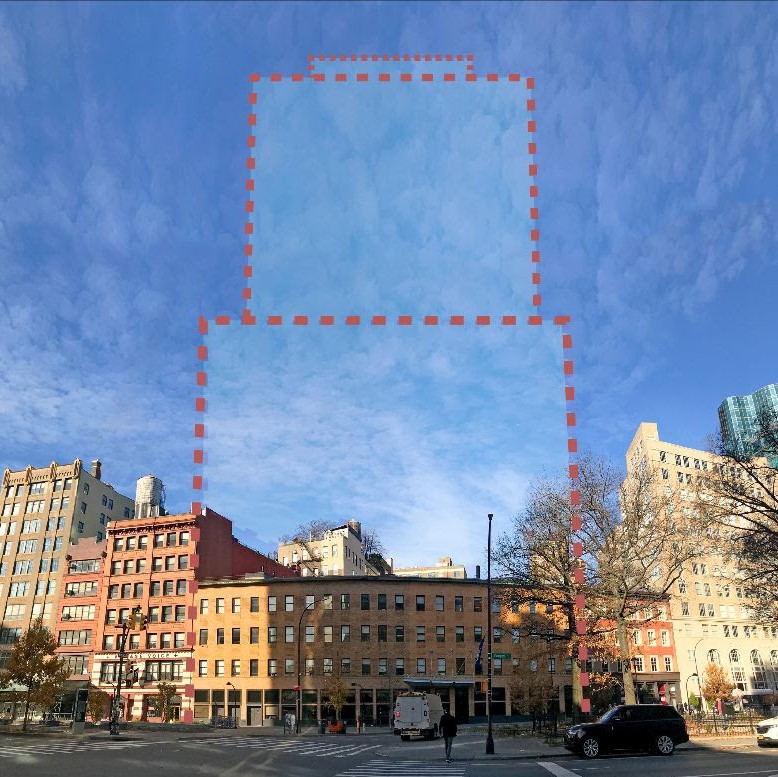
The first comment on this article from the poster with no name included this erroneous statement:
“it’s not legal for them to sell their apartments to nonartists at market price”
That falsehood has been debunked. And the subsequent unsubstantiated positions and misstatements of the law have been pointed out. Now the postings turn to the typical reactive response, and in doing so all the expected boxes get checked:
> “twisting my words”
> “acting in bad faith”
> “misrepresenting what I’m saying”
None of the above. Constantly repeating what is non-factual does not make something true.
You didn’t debunk anything Pete, and anyone who reads this exchange can see that. Have a good one.
Debunk: expose the sham or falseness of a claim
Debunk: show that something is less important, less good, or less true than it has been made to appear
Debunk: expose an assertion as being pretentious, false, or exaggerated
Anyone who reads your comments can see: what you tried to claim as fact is actually untrue.
And you misread (b), which pertains to households where the members are “ALL unable to meet the artist certification qualifications” — so the claim you made above (“Parts (a) and (b) require the occupants (or at least one occupant) to be artists”) is simply incorrect. Under (b) the entire household (“ALL”) is unable to comply, but is legally allowed to occupy the JLWQA unit.
Even if I misread that (it’s not clear to me that I have, but I admit it’s possible), this all started when I made the point that it is now legal under the new law for artists to sell to non-artists, by which I clarified I meant to intended owner-occupiers. You asked, “Where in the law does it state that the sale of a JLWQA unit must be made to an artist?” Part (b) only permits occupancy by people who were residents on September 15, 1986, and who registered with the Department of Cultural Affairs prior to October 1987. It does not permit a non-artist to purchase and occupy today.
None of the laws that were in place for JLWQA state anything about purchase of a JLWQA unit. You keep pushing that angle. You’re fixated on a provision that didn’t exist.
You’re acting in bad faith and being purposefully obtuse about what I’m saying. Can a JLWQA apartment be sold to a non-artist? Sure. Can a non-artist live in it? No, except maybe under extremely limited conditions. Apartments only have value because people want to live in them. If the city actually enforced the prohibition on occupancy by non-artists, JLWQA apartments would have little market value. So my original statement that artists can now legally “sell their apartments to nonartists at market price” is absolutely correct. Non-artists can legally live in JLWQA apartments now, so they will be willing to purchase them at market price. Stop misrepresenting what I’m saying and pretending you don’t know what I’m talking about.
Again you misstate the allowances for occupancy within JLWQA units, as are laid out in the NYC Zoning Resolution. And, as for Councilmember Chin’s new JLWQA Penalty bill, the NY City Council Committee Report also fails to provide the full information. That is set down in the ZR per the definition of “joint living-work quarters for artists”:
A “joint living-work quarters for artists” consists of one or more rooms in a nonresidential building, on one or more floors, with lawful cooking space and sanitary facilities meeting the requirements of the Housing Maintenance Code, occupied:
(a) and arranged and designed for use by, and is used by, not more than four non-related artists, or an artist and the artist’s household, and including adequate working space reserved for the artist, or artists residing therein;
(b) by any household residing therein on September 15, 1986, whose members are all unable to meet the artist certification qualifications of the Department of Cultural Affairs that registers with the Department of Cultural Affairs prior to nine months from January 8, 1987; or
(c) by any person who is entitled to occupancy by any other provision of law.
I have no idea how you think this contradicts what I said. Parts (a) and (b) require the occupants (or at least one occupant) to be artists, and I am not aware of any other law that permits occupancy by non-artists under part (c). What point are you trying to make? If you think I’m missing something, just come out and say it.
This is the part you keep leaving out that broadens the allowance beyond the narrow parameters you continue to point to:
(c) by any person who is entitled to occupancy by any other provision of law.
That is key.
How is this key? What other provisions of law do you believe allow non-artist occupancy? Please name them, because I am not aware of any.
You say you lack awareness of the “other provisions of the law” as noted in the ZR, but you’ve spent days making various claims in regard to the law(s) in question.
Is your lack of awareness based on your failure to pay attention? Or because of your insistence on pushing incorrect and incomplete info to back up your uninformed positions?
Research could be the answer.
Pete, you’re being purposefully vague and twisting my words. You know there is no other law that permits non-artist occupancy in M1-5A/B zoning. This is a boilerplate legal catch-all. It does not do what you’re implying. You’re not acting in good faith.
LES3025: It has never been “illegal” to sell a JLWQA to a nonartist, now or prior. The info from the New York City Council for Chin’s new bill, which increases fines, misstates the law.
What are you talking about? It was absolutely illegal for someone who was not a certified artist to live in JLWQA housing zoned M1-5A or M1-5B.
No it was not. Neither was it “illegal” for a JLWQA unit to be owned by a non-artist.
Where do you get your bad information?
I feel like you’re focusing on “owned” and I am talking about owner-occupied. Yes, a nonartist can own a JLWQA unit or building. But they cannot legally occupy it. There have long been fines in place (rarely enforced) for nonartists living in JLWQA space. A nonartist could own and rent to a certified artist, but we both know that is not what is happening. The immense value of SoHo apartments reflects that the city has permitted illegal owner-occupancy and rentals.
Seems it is you who are focusing on “owned” – as it has consistently been you claiming that artist ownership is a requirement for JLWQA units.
And again you are misstating the law.
Please cite the section of the law, and the actual text, to back up your [mistaken] position that someone who is not an artist — what you label a “nonartist” — “cannot occupy” a JLWQA unit.
Pete, sure, I can point you to it. Section 42-14(D) of the Zoning Resolution provides for JLWQA housing and limits it to certified artists (https://zr.planning.nyc.gov/article-iv/chapter-2#42-14). The penalties for violations are found in the New York City Department of Buildings Penalty Schedule, and is currently $1,250. Thus, it is currently illegal for people who are not certified artists (or who do not live in JLWQA space with certified artists like family, etc.) to live there. You can see this all explained in the committee reports relating to the new law, which are available here on the city council’s website.
LES3025, you get this all wrong:
“Penalties for certified artists? What penalties? They won’t be fined and it’s not legal for them to sell their apartments to nonartists at market price.”
Where in the law does it state that the sale of a JLWQA unit must be made to an artist?
That is a typo. I meant it is NOW legal. Artists CAN sell to nonartists, which is a major windfall for the artists.
Oh yes, the City really cares about low-income people.
In 8 years the mayor has allowed acceleration of gentrification of Brooklyn, Manhattan and Queens, pushing out people and destroying neighborhoods.
And while virtue-signaling the Soho rezoning, somehow the City was OK with a new $18 million playground in Battery Park — the richest neighborhood.
Per the NY Times:
“.. Battery Park…will celebrate its new “playscape” — a playground three times the size of the one that was destroyed by Hurricane Sandy in 2012….The $18.3 million Battery Park project replaces a playground from the 1950s. “It was unimaginative,” said Warrie Price, the president of the Battery Conservancy, the nonprofit group whose mission is to reinvigorate the Battery….The new playground also has an improv and puppet theater, which Ms. Price said was the first at a playground in New York City….”
I believe Sean Sweeney misstated the amount of financial burden that the residents of these large historic neighborhoods are soon to be responsible for. Live-work lofts are big…so that we can actually make artwork while raising families.
Thus the financial penalties start around $150,000 for smaller lofts, prior to the expenses required to pay lawyers, permits and all professionals needed to be hired to structurally convert any building that actually can be structurally converted from manufacturing to residential…. Many many won’t be able to… thus making any conversion impossible. This ill-conceived plan throws all buildings that have their C of O’s into question and choas….places a big red X on the backs of all seniors and artists and doesn’t do a damn thing for nonconforming to make them legal.
What it does do is rob from Peter (the residents) to give to Paul (art-related businesses)!
We have been paying enormous property taxes to the City, which in turn gives enormous tax breaks to developers! That’s a large part of this story… Commercial owners of illegal ground floors have now been given a free path (no fines no penalties) to as-of-right, oversized retail….And now it’s the job of artists and their shareholder neighbors to pay into a public city fund which places the word ART in front of it.. and that’s supposed to make it a sensible, seamless pathway toward residential. What is wrong with this picture?
I don’t understand how Landmarks has been noticeably absent. IMO, passing “The SoHo NoHo Neighborhood Plan” is equivalent to the demolition of Penn Station.
I pray that this plan will be nullified in the Eric Adams administration in two weeks.
So I guess you’re not really into representative democracy. You want the mayor to operate as an autocrat, with the ability to “nullify” duly passed legislation?
No, see, you don’t get it. These people love democracy. They just think democracy is when a tiny group of people gets to impose their will by shouting at elected officials during public meetings.
Local gov’t corruption doesn’t get more venal than this, folks.
SEAN SWEENEY SUMS IT UP NICELY:
“REBNY got all it wanted: legalization of big-box retail, increased height and bulk, evisceration of the 56-year-old Landmarks Law, and introduction of thousands of units of luxury housing, with not a scintilla of a guarantee that a single unit of affordable housing will ever be built, due to the various loopholes provided by the de Blasio administration.”
“However, residents — both artists and nonartists — have been hit with draconian penalties starting at $40,000 and reaching into the hundreds of thousands to force them to convert to the new zoning requirements, while retail businesses that operated illegally for years can now operate legally without having to pay a dime.”
“Clearly,” Sweeney said, “this is a punitive rezoning, punishment for resident activists who stood up to de Blasio’s flimflam finale, and spiteful revenge by Margaret Chin for our support of her poltiical opponents.”
As is typical, Sweeney is full of it. REBNY got all they wanted? Not true. They wanted higher commercial density, which Open New York successfully lobbied against.
Legalization of big-box retail? One, it requires a special permit. Two, you already had Nike, Uniqlo, Zara, Bloomingdales. The fact is, under the old system, only the big stores could either afford to navigate the byzantine requirements or risk the fines for not complying. (Even if the fines weren’t common, small stores couldn’t risk it.)
Evisceration of the Landmarks Law? The Landmarks Law is unchanged.
No affordable housing? I like how they focus on “no guarantee.” Sweeney knows there absolutely will be M.I.H. developments under the new law. The idea that there will be zero affordable homes built is absurd and he knows it.
Penalties for certified artists? What penalties? They won’t be fined and it’s not legal for them to sell their apartments to nonartists at market price. They are all rich now. (They were before, because they could illegally sell the apartments, but legalizing it is better.)